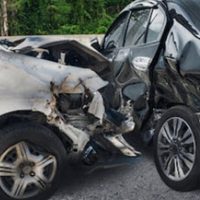How to Determine Fault in a T-Bone Accident

T-bone accidents occur when the front of one vehicle rams the side of another. Most common at intersections, T-bone accidents also happen with some regularity in parking lots.
Although Florida is a no-fault state, fault does matter when one motorist has suffered a serious injury. An injured motorist can only sue another driver who shares some fault for their injuries, so it is vital to understand how an insurer determines fault. Our Delray Beach car accident lawyer provides an overview below.
Either Driver Could Be At Fault
There is a common misconception that the driver who struck the other is always at fault. We understand why some people think this is true. Very generally, it is often the case that the driver who struck another motorist is to blame. But there is no rule to this effect. It is entirely possible that the driver of the vehicle that got crunched is to blame for getting hit.
Our Delray Beach car accident lawyers need to analyze the circumstances surrounding the crash to determine fault. The sooner you contact an attorney, the better we can help.
Determine the Right of Way
Rules govern who may pass through an intersection first. When there is a light, then it is easy to determine: those with a green light can go, while those with a red light must stop. Even without a light, the general rule in Florida is found in Fla. Stat. §316.123(b): all vehicles must stop, but the first vehicle to arrive at a four-way intersection can go first through the intersection.
Very often, T-bone accidents occur because a driver who must yield refuses to. There are many reasons why—impatience, aggressiveness, road rage, or impairment by drugs or alcohol. When the driver refuses to stop, he or she can plow straight into a car that legally has the right of way.
Our attorneys will collect evidence to determine who had the right of way at the moment of the crash. This evidence can include:
- Your own testimony
- Any pictures, surveillance video, or dash cam footage
- Other witness testimony
- The other driver’s statements
Finding evidence takes time. You can help your case by identifying all the witnesses who observed the accident and call the police to come to the scene.
Fault Can Be Shared
Under Florida law, both drivers might share some of the blame for an accident. This is called comparative fault. As a consequence, an injured victim might receive less compensation than they otherwise could. For example, if a motorist is 60% to blame and suffered $50,000 in damages, they can receive at most $20,000 (40% of the amount).
Many insurance companies like to allege that our clients are at fault—even when no proof supports that claim. Your attorney should carefully construct a case to show who really is to blame for the wreck.
Speak with a Lawyer Today
The lawyers at Earnhart Law have helped clients injured in all types of accidents. Call our Delray Beach personal injury attorneys today to schedule a free consultation, 561-265-2220.
